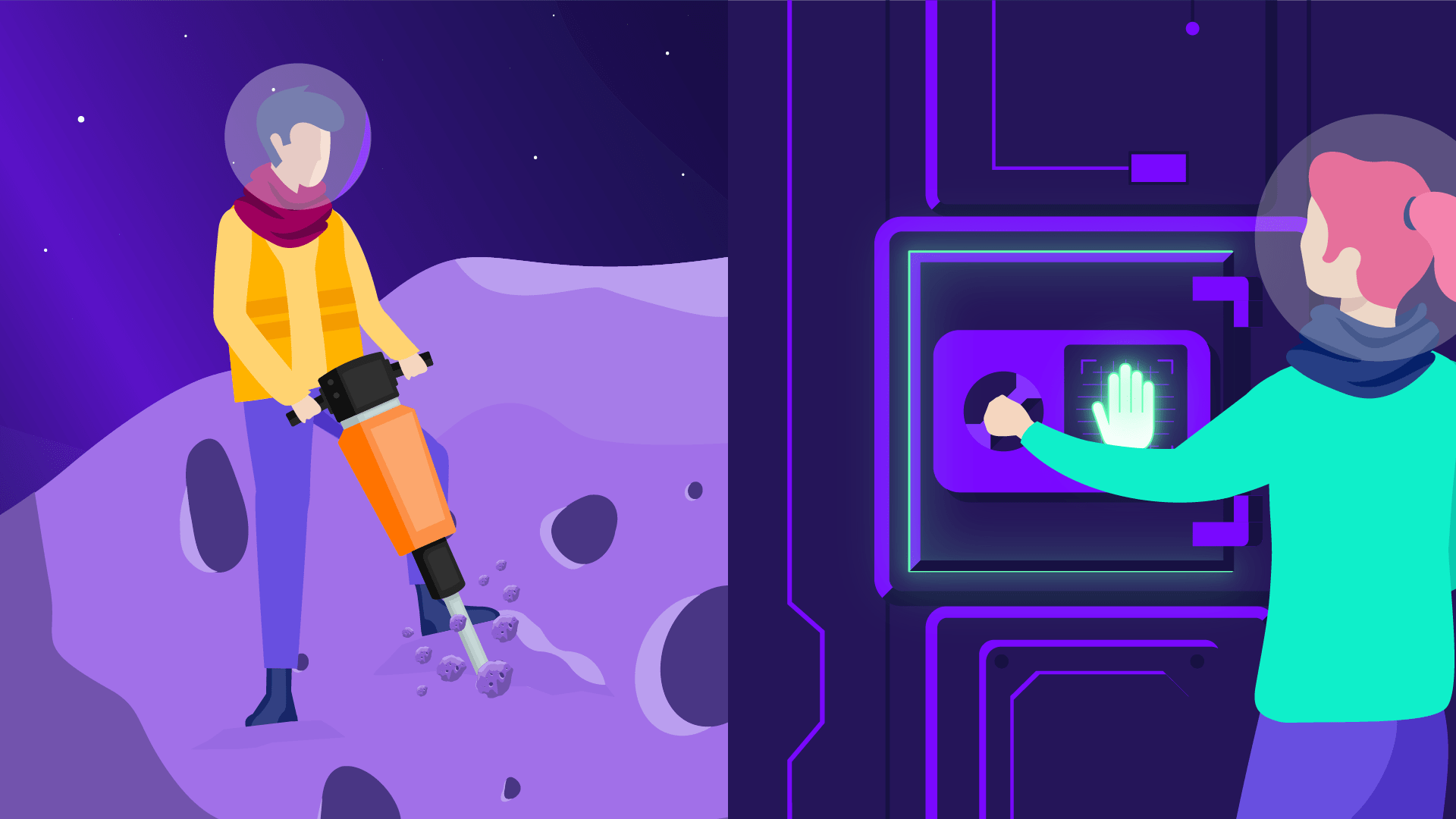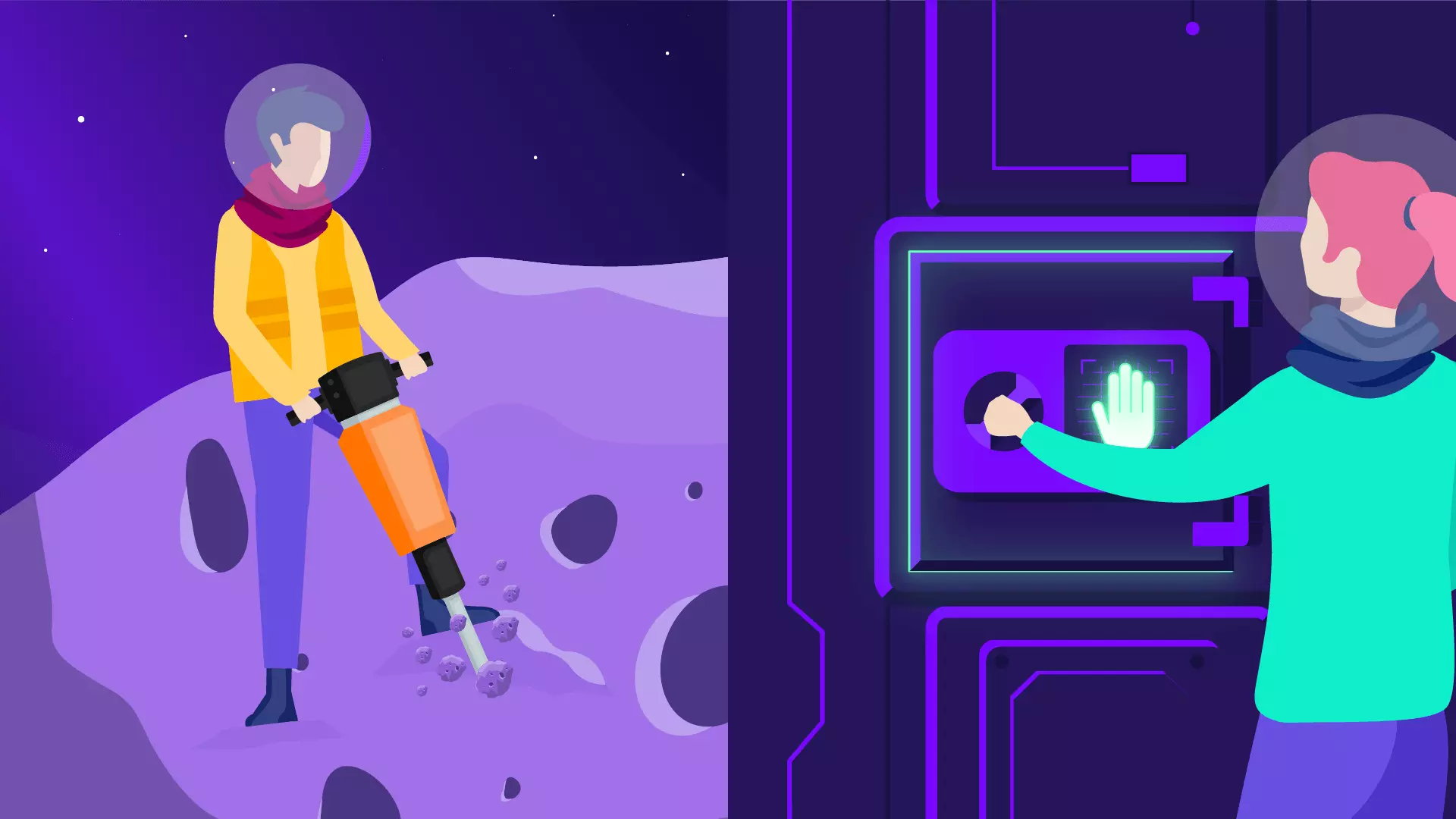Validation of transactions in blockchain networks. Creation of new tokens and cryptocurrency units. The role of the miners. Mining farms.

In the crypto ecosystem we use the term “mining” to refer to the process of validating transactions in a blockchain, which also generates a reward for those who carry it out.
But although this activity is known under that name, it does not involve any type of extraction of materials from the earth or rocks. Rather, it is a way of running software, a computer effort.
The term has its origins in the validation of Bitcoin transactions. As we know, the total limit of BTC that will be created is 21 million. But by the time the network went live, there were none.
Each unit of bitcoin, although it existed “in theory”, had to be obtained in some way. The term mining is a colloquial metaphor that illustrates that bitcoin units need to be mined and will eventually be used up.
If Bitcoin did not have an established limit, as happens in Ethereum, we would instead talk about the manufacture of cryptocurrencies.
The primary purpose of mining is to establish and encrypt transaction history in such a way that it is computationally impractical to tamper with it.

Miners lend their computers to the network to “mine” new cryptocurrencies and validate transactions.
What do miners do?
Those who practice mining are called miners. That is, those who make their computers available to a crypto network to validate transactions and thus obtain new units of each cryptocurrency.
Mining is the mechanism used to introduce new units to the system: these miners are paid a reward for their work in cryptocurrency. This serves both to expand the networks of these new currencies in a decentralized manner and to motivate people to provide security to the system.
Although mining began as a home activity, today it is constituted as an entire economic activity in itself, in which large mining farms, manufacturers of video cards and ASIC hardware participate.
What are mining farms?
This is the name given to places specifically built to mine cryptocurrencies: structures where large-scale mining can be done, which require a considerable investment and occupy a large surface area.
They generally consist of dozens or hundreds of graphics boards or ASIC chips configured to work 24/7. Some companies build large warehouses to house the equipment, taking into account designs that allow savings on costs associated with mining such as cooling or energy consumption.
Today, miners look for places with some sort of comparative advantage. Like Canada, where low temperatures result in great energy savings for cooling; or like Paraguay, where electricity is very cheap.
Block, reward and hash rate
February 2, 2021
Blockchain elements: block, hash, nonce. Mining tests. Rewards and consensus algorithms. What is the hash rate of a crypto network.

As we explain in our guide on blockchain technology, each transaction of a cryptocurrency is registered in the blockchain of its corresponding crypto network, along with others, within a container called a block, which once validated is transmitted to the rest of the network and joins the chain.
A block contains a certain number of transactions that must be verified. The size of the block, and therefore the number of transactions that can be processed by each one, depends on the protocol of each network.
In addition, each block contains the hash number (a type of identifying formula) of the previous block, which generates a “chain”. This is the novel technique used by Bitcoin when processing transactions. You can read more about it in our guide to Bitcoin.
For a block to be validated, each protocol requires some type of proof from its miners. Although the most widespread is proof of work, there are also other methods such as proof of stake or proof of space, which offer some advantages and disadvantages compared to PDT. .

Each cryptocurrency network asks its miners, by protocol, for some type of proof for their contribution.
The rewards for mining blocks
The first mining node to solve the cryptographic problem associated with mining wins the reward.
In the case of Bitcoin, miners must ensure that a block obtains a certain hash number set by the network software. And to achieve this, they search for random numbers in a section of the block called nonce, until they find the one that matches the instructions.
This complexity test is also known by the name of the algorithm used to solve the problem: SHA 256.
This method can change depending on the consensus algorithm each network uses, whether proof-of-work, proof-of-stake, or another.
What is hash rate
This is the number used to measure the computing power of certain mining equipment, depending on the consensus algorithm that it has to solve.
In the case of Bitcoin, miners compete to solve the SHA256 algorithm and the equipment used in bitcoin mining is specifically designed to achieve this.
Remember that mining is intentionally designed to be resource-intensive and difficult to achieve, so that the number of blocks mined each day remains stable.
The more hash power a board, miner, or group of miners (known as mining pools) has, the more likely they are to solve the algorithm and therefore obtain the reward.
Additionally, the sum of the mining hardware hash rates results in the total hash rate of each network. This, ultimately, is the sum total of computing power working to keep the network secure.
Those interested in knowing the total hash rate of bitcoin can find it on this page.
Types of consensus tests
Proof of work in Bitcoin. Proof of stake in Ethereum. Burn-in, capacity and elapsed time tests as alternatives.

Proof of work is the method used by Bitcoin to keep the blockchain and network transactions secure. Every time a new block has to be mined, as we explained previously, the network asks miners to “spend” certain computing power (and electrical energy) to validate it.
This method ensures that if any malicious actor tries to rewrite the entire blockchain from scratch, to change the transaction history they would have to re-mine all blocks since the start of the change.
The computational, energetic and economic expenditure that such an intrusion would require makes the attack unfeasible. In that sense, proof of work is one of the fundamental pillars of the security of a blockchain.
For several years, different cryptocurrency development groups have been trying to find and implement alternatives to this system, trying to achieve the same level of security but without so much energy expenditure.
Thus several alternatives emerged. Some have already been tested on blockchains not as important as Bitcoin, and others are just theoretical alternatives.

Crypto networks use consensus proofs to confirm mining work, although not all of them are the same.
Proof of Stake on Ethereum
The functions behind the Ethereum mining process are the same as those of Bitcoin. Nodes compete with each other to complete a mathematical equation. The node that manages to add the next block to the blockchain receives a reward, which is around 3.5 ETH. In Ethereum, blocks take between 14-16 seconds to mine.
Ethereum uses the ETHASH mining algorithm instead of the SHA-256 algorithm used in the Bitcoin mining process.
Both mining processes use proof-of-work systems. Consequently, they consume large amounts of electricity. But Ethereum has already announced “Ethereum 2.0”, where it will migrate its consensus algorithm to proof of stake.
And while Ethereum’s difficulty rate increases as more miners participate in the network (as in the case of bitcoin) the current difficulty is not even close to Bitcoin’s numbers.
Ethereum is still mined using graphics processing units (GPUs). While these devices are much more powerful than central processing units (CPUs), they cannot compare to the capabilities of ASIC miners, built specifically for mining the SHA256 algorithm.
Other alternative tests
Proof of burn Miners obtain the possibility of mining a block by “burning” a part of some token (whether it is the native one of the crypto network they are preparing to mine, or an alternative one) that they have in their possession .
Proof of capacity Allows mining devices to use available space on their hard drives to mine cryptocurrency. It is also played through a “draw”, but in this case the more HD space a node has available, the greater the probability of being designated to mine the next block.
Proof of elapsed time (proof of elapsed time) It is one of the most experimental. It is designed to be scalable and was intended for private blockchains. That is why it is difficult for it to be implemented in a cryptocurrency with public blockchains, such as Bitcoin.

